Some games are easy to pick up and play. Others require you to learn, improving and developing skills as you go. The multiplayer-only Natural Selection 2 proudly sits in the latter camp. The latter camp isn't for everyone, and that's okay. But as long as a game is designed well enough to allow you to learn, improve and develop, it's always great to see one push the envelope and not rely on the most tried-and-tested formulas. Often, these games end up being some of the most refreshing, the most celebrated titles around. Natural Selection 2 is one such game. It isn't the most accessible game on the market, but if you put in the time, this deep and complex strategy/shooter hybrid rewards you with plenty of engaging variety and lots of thrills.
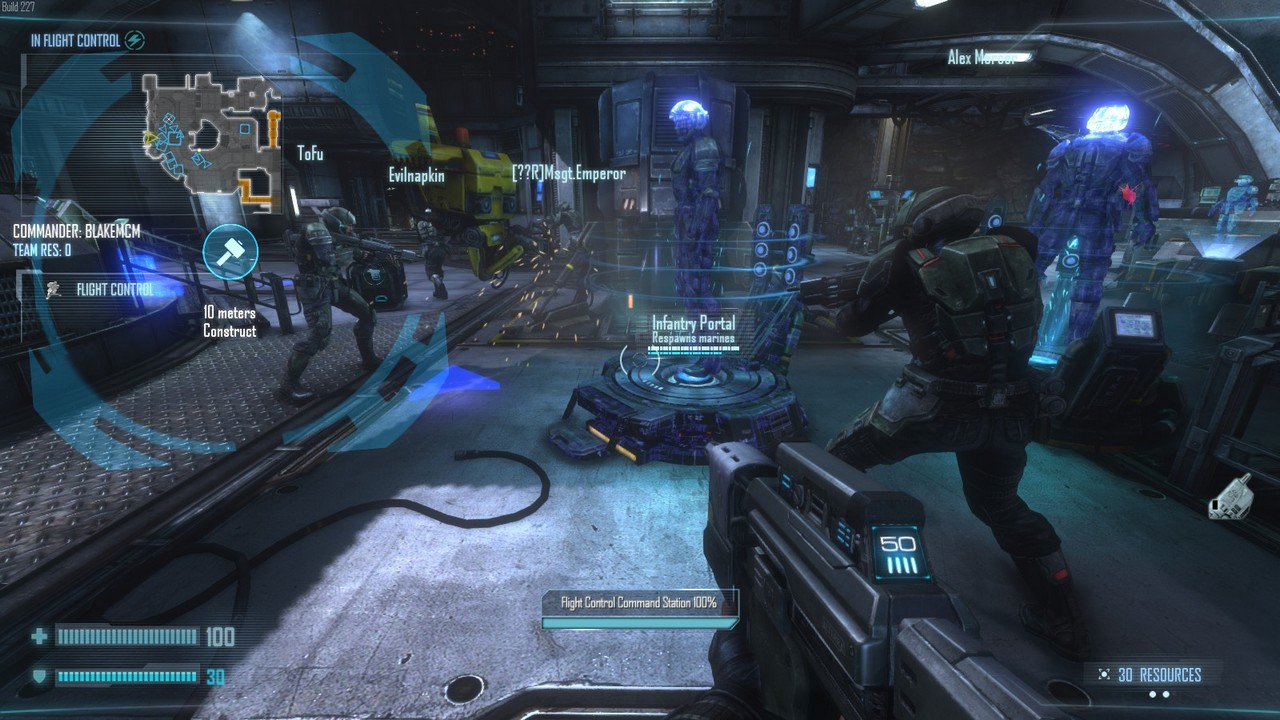
It's important to stress from the outset: if you're a first-time player, your initial enjoyment of Natural Selection 2 will be entirely decided by how prepared you are to learn new gameplay systems. There's no interactive tutorial; all the game offers is a series of lengthy demo videos. These aren't ideal, they don't open within the game interface, and it's a lot to take in should you choose to watch them all back to back before diving in. That said, by far your best bet in picking up Natural Selection 2 is to play Natural Selection 2. The way the game is structured makes it very easy to learn by doing. Certain servers (highlighted in green) are defined as rookie servers, providing a great place to get to grips with the game's many systems, ideally under the watchful eye of a more experienced commander.
The commander's role forms the RTS portion of the experience. Here, one player controls resource management, base building, and upgrades. The commander directs units, issues orders, and tells the team where to go and what to do. The best rounds of Natural Selection 2 see the commander using full voice chat, communicating with the team vocally as well as through the interface. A good commander isn't the only thing that can make NS2 appealing, but having a competent leader goes a long way towards making the game more enjoyable.
Thankfully, it's usually easy to find plenty of welcoming, communicative matches; after all, NS2 is very much a team game. There's absolutely no incentive to ostracize or punish teammates for a poor performance. The best commanders know that to win, communicating with and nurturing your team is key. The best way to learn how to play commander is by not playing commander. Take a hands-off approach, stick to one of the ground troops, and it's very easy to pick up what makes for a successful--and unsuccessful--commander. On top of that there's Explore mode, which lets you play around in the RTS interface with a vast amount of resources, and tool tips for each structure.
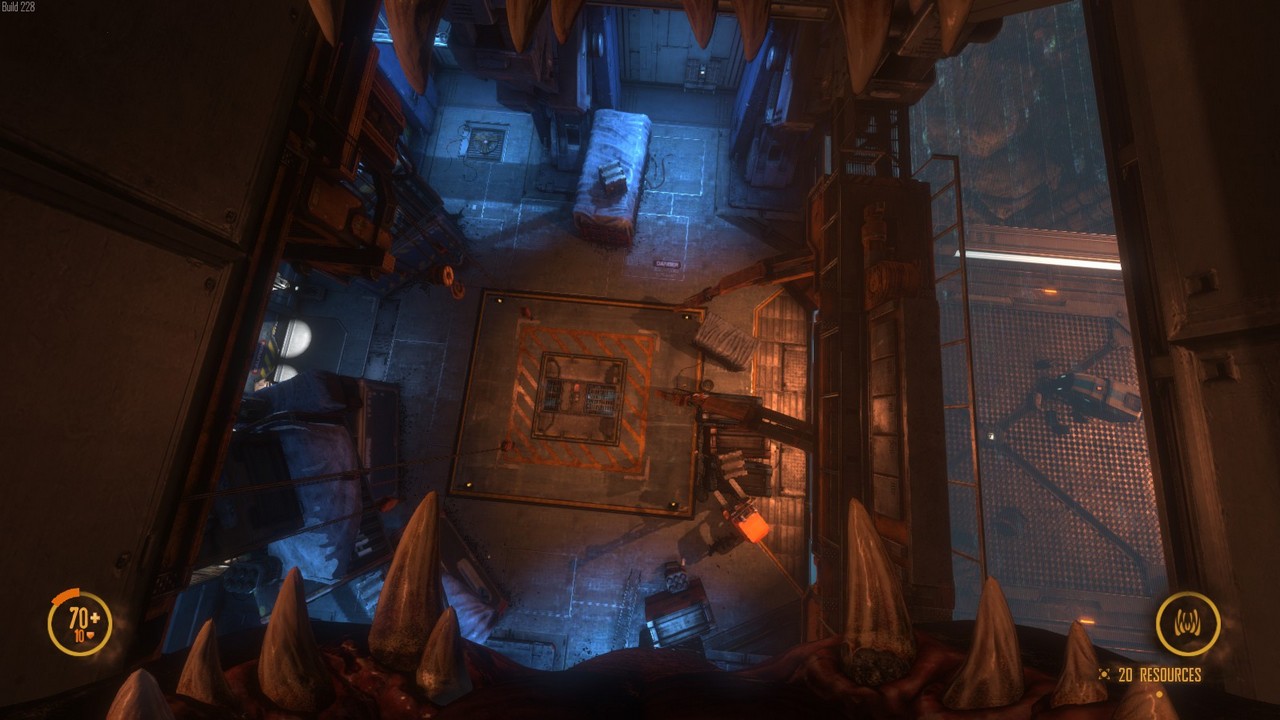
The commander is just one role, however, and the rest of the players have a diverse array of options to choose from. There's a lot here, and chances are, after a bit of experimentation, you'll find at least one aspect of the game you really click with. The best way to approach the game isn't to think of it as having an overall learning curve, but a number of smaller spikes; focus on one aspect of the game, and you'll learn plenty by way of observation while doing so. Thankfully, the game's been designed exceptionally well to allow this. Every facet of both the Frontiersmen (marines) and Kharaa (alien) sides is important. It's very much like Team Fortress in that respect: every role has its place and purpose.
The roles themselves vary considerably depending on which side you're on. The Frontiersmen are the more traditional of the two; rather than focusing on individual classes, weapon and equipment upgrades allow you to outfit your character depending on your playing style and the demands of the situation. Through the commander's resource management, new weapons are made available, including shotguns, flamethrowers, grenade launchers, and mines. Then there's the prototype lab, allowing the research and purchase of jetpacks and exos (think the loader from Aliens, but with the ability to punch and shoot). On top of that there are numerous other research possibilities. There's the arms lab that provides permanent armor and weapon buffs as long as the lab remains active, a robotics factory that allows for the creation of commander-controlled support units, and various individual objects such as teleports, enemy detectors, and sentry guns.
Of course, nothing comes for free, and all these goodies can only be bought with resources. For both teams, resources take the form of team resources and personal resources. Team resources are used exclusively by the commander to build, upgrade, and generally get things done. Personal resources are used to buy the items on the ground. Both types of resource are generated based on the number of collection structures your team has put in place (extractors for marines, harvesters for aliens).
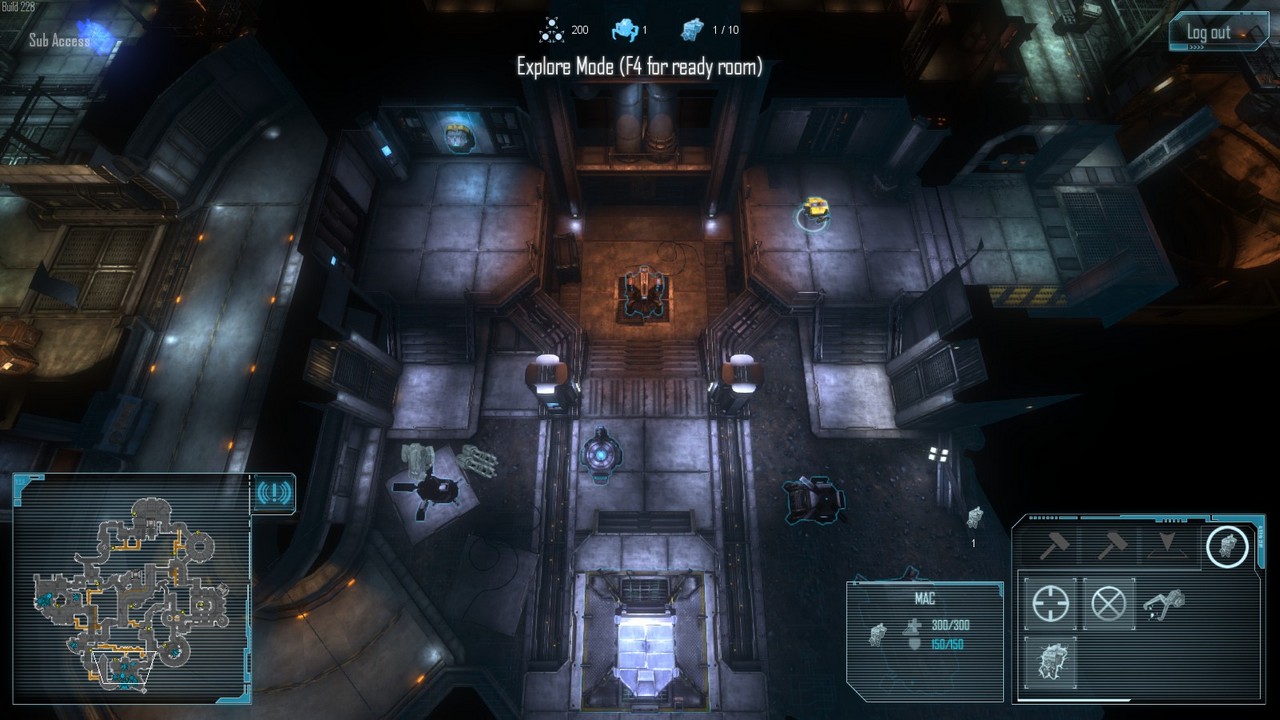
It's unlikely your team will be able to afford every single bit of kit, so you have to choose your purchases carefully, and this adds a layer of strategy to all aspects of the game. A good commander will have a game plan, focusing on specific research and development to shape the team into a suitable side. Fancy building up a ton of defenses and sending a strike team to meet your opponent? Or perhaps aggressively expanding your base across the map, choking the opposing team and cutting off their potential resources?
The Kharaa side, on the other hand, is a lot more focused on class-based progress. There are five alien types, with the skulk leading the way as the basic, free unit, and the rest requiring increasingly more personal resources to evolve into. You have the gorges, almost-cute hippo-like creatures that act as healing/support classes, who can also build hydras (sentries) and clogs (defensive walls). They can also powerslide around on their bellies. Then there are the lerks: flying units who specialize in precision strikes and utilize poison to get at their foes. Next up is the fade, the stealth specialist that excels in speed and rapid damage.
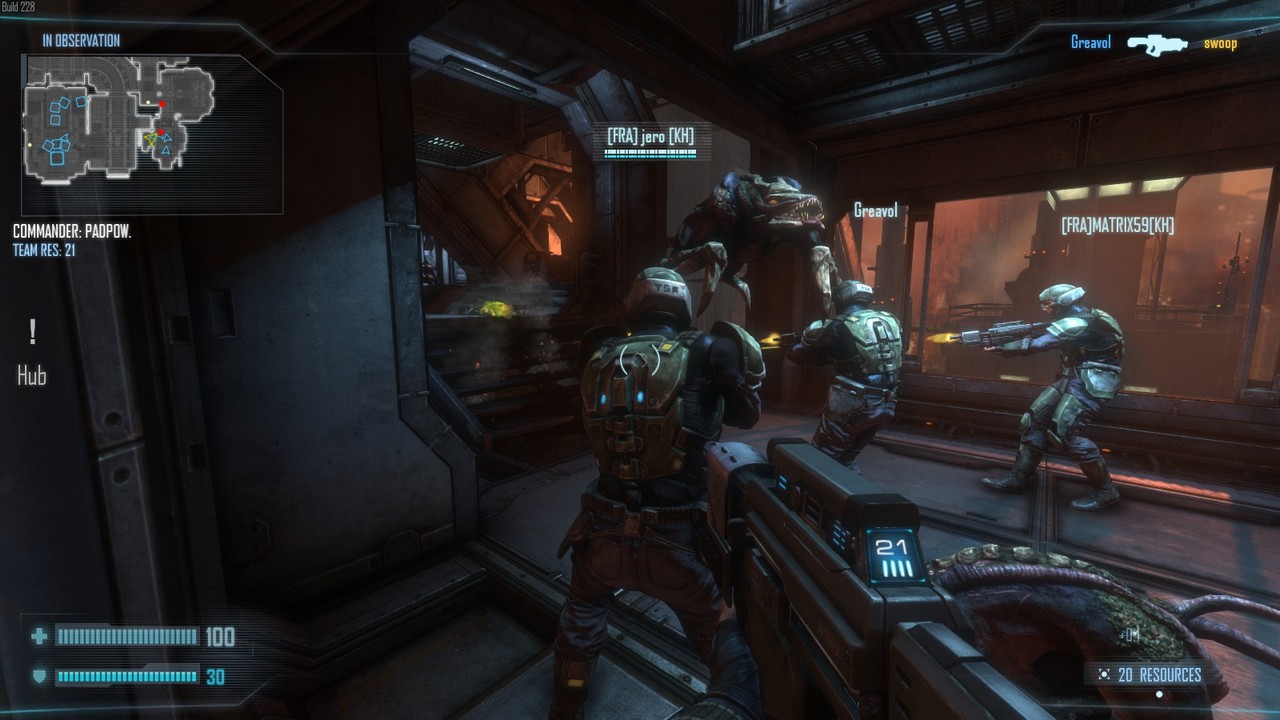
Finally there's the most expensive unit, the onos, a huge rhino/gorilla-like creature with vast amounts of health and armor, capable of rampaging through even the most well-defended marine base. The onos is perhaps overpowered right now, and can often turn the tide of a match in a way that can occasionally feel cheap, although watching a team of skilled marine players rapidly take down an army of four onos is a moment of beauty. (Unless you're on the alien team, of course. Then it's the stuff of nightmares).
The RTS elements of the Kharaa vary somewhat from the marine counterparts, too. There's still the emphasis on upgrading and researching, but here individual hives (the main bases) are converted into specific hive types, focusing on either stealth, speed, or defense. Ground is gained by laying cysts, which spread a sickly green infestation across the map, and harvesters require infestation in order to be planted. Unlike the marine power nodes, which must be placed on a specific point in a room in order to power it up for the marines, cysts can be placed anywhere, as long as they're within radius of another cyst. It offers a more natural, creeping form of expansion than the marines' technical wizardry, which is reflected nicely in-game as the infestation takes hold, plastering the levels with organic-looking textures.
There's a lot more focus on expansion in general when it comes to the alien side, with fewer restrictions on things like sentries (here called whips, protruding tentacles that can move around as well as giving marines a bit of a beating). The primary emphasis is on the aliens themselves though, and each class has unique offensive abilities which have to be researched. They can also be boosted by general buffs, which the commander can activate at opportune moments. These take the form of things like camouflage, armor, health regen, and speed increase. The abilities are grouped into types, and one ability from each group can be active at any one time, so for example you may choose to play as a silent, fast gorge with regenerating health--or something else entirely. Again, one of the best things about Natural Selection 2 is the amount of player choice available within a set system.
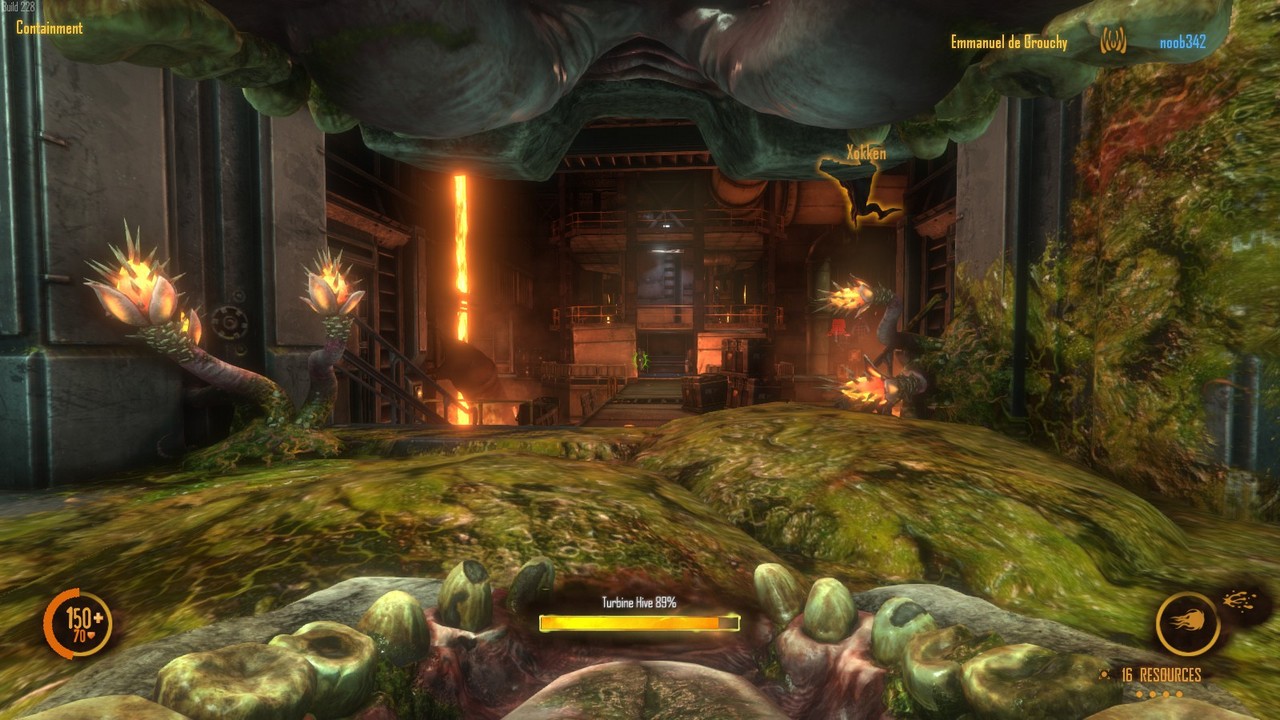
The variation on offer can lead to some interesting, emergent experiences. A small band of twitchy soldiers might hole up in one corner of the map, flashlights darting from corner to corner as they guard against a steady drip-feed of skulks. The telltale screech of their attack becomes a signal for erratic, panicked fire as the commander desperately tries to keep the base in one piece. Such a battle has the feel of an intimate survival horror-esque experience, where the difference between winning and losing seems less important than simply surviving for as long as you can. In other matches, though, you'll be part of a tanked up army of powerhouses, or a group of precise, base-expanding operatives lethally shutting down the opposing team.
While the game's textures aren't outstanding (although on high-end systems, Natural Selection 2 looks great), this is more than made up for by its artistry. The Kharaa look fantastic in first person; play as the skulk, for instance, and the camera lives inside the creature's mouth. This sees you peering out of its gaping maw, sharp teeth and darting tongue working overtime as you chomp away at marines. The majority of locations are comprised of metallic corridors and chiseled caves, but Natural Selection 2 still has the capacity to visually surprise, with the occasional corridor opening up onto an outdoor, snow-covered precipice or, in the case of the excellent Refinery, a central lava cascade. Thanks to some extremely impressive lighting, the alien design and the organic, pulsing growths that make up the infestation, the game has a great aesthetic going for it.
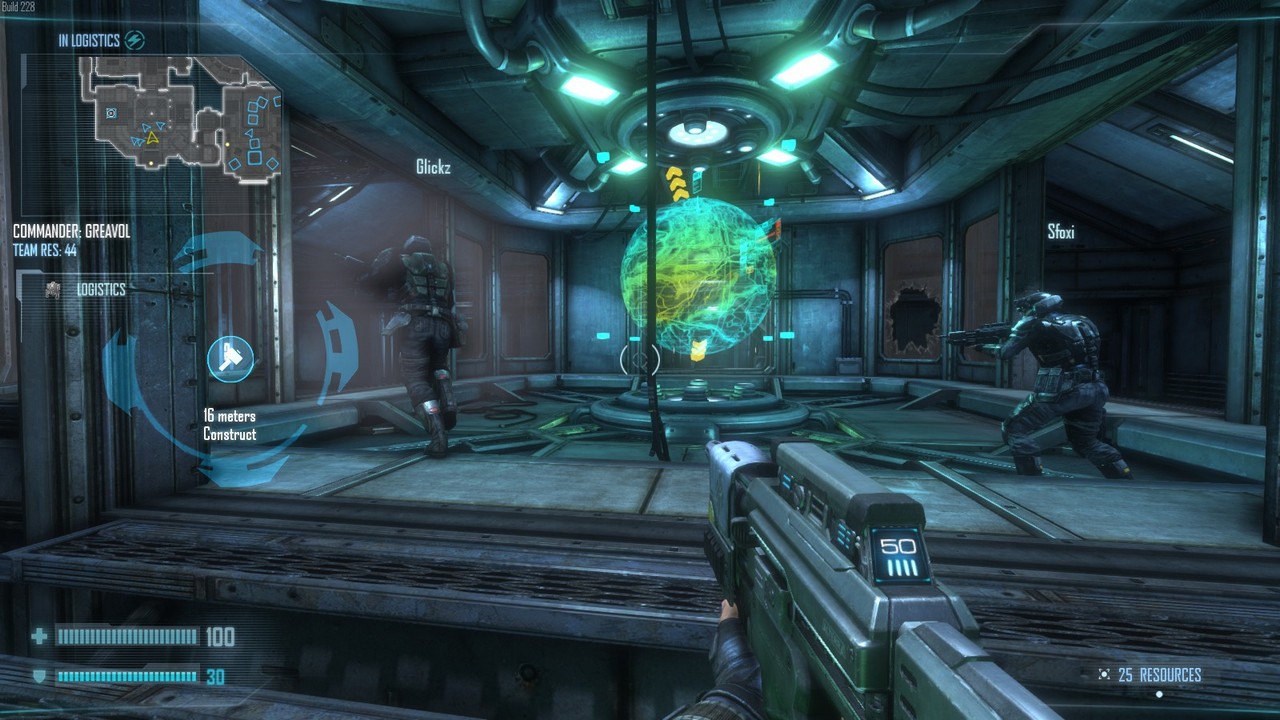
Natural Selection 2 isn't without its problems, however. For starters, despite the fact they're large and well-designed, there are only six maps, although between free updates from developer Unknown Worlds Entertainment and community-designed maps, there's potential for expansion here. Then there's the barrier for entry; there's no denying that when faced with a genre mash-up comprised of a bunch of classes and no hands-on tutorial, some players are going to be put off before they get started.
It's certainly not the multiplayer experience everyone is after, and with no single-player component whatsoever, Natural Selection 2's appeal entirely depends on your desire for a complex, deep alternative to the usual immediacy of modern online shooters. There's potentially more balancing to be done when it comes to certain classes or abilities being slightly overpowered, but that's a matter of fine-tuned refinement rather than a vast overhaul. Right now it's an excellent game that taps into both the FPS and RTS markets, with plenty of varied builds and playing styles on offer. If competitive multiplayer gaming is survival of the fittest, then Natural Selection 2 is certainly fighting tooth and claw to reach the top tier.